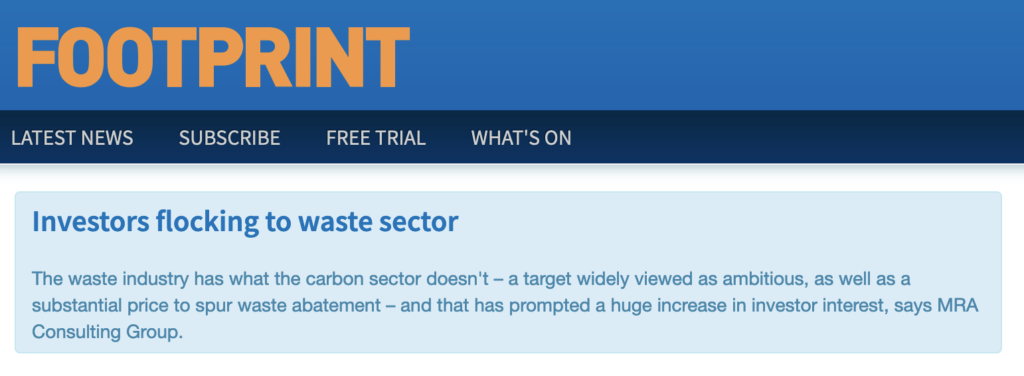Investors flocking to waste sector
Originally published by Footprint News

“Everyone is interested in investing in waste at the moment,” according to the consultancy’s managing director Mike Ritchie, who says his business is currently handling two or three investor calls a week.
“There has been a massive upswing in interest in buying, or investing in, resource recovery companies.”
Tweet
The flurry of activity is underpinned partly by the goals of the national waste action plan, which include achieving an 80% average recovery rate from all waste streams by 2030.
“For the first time in Australia we now have every government in the country signed up to an 80% (landfill) diversion target by 2030,” Ritchie told Footprint.
Greater use of landfill levies
In addition, levies on the landfill disposal of waste are on the rise and extending, although the rates still vary significantly between jurisdictions, Ritchie said.
NSW, Victoria and South Australia all now have rates set at above $100 per tonne, Queensland’s rate has risen significantly, and Tasmania is committed to introducing a levy.
The targets and levies, plus new export bans, as well as pledges from governments to encourage the purchase of recycled-content goods, have “de-risked investment in recycling businesses”, he said.
Finance from the Clean Energy Finance Corporation to support waste projects, and the flow of funding from the federal-state Recycling Modernisation Fund, has also helped.
As a result, it has become very clear to investors “that there are tailwinds that will support investment in this space”, he said.
“Because governments have said they want this to happen, the investment community is willing to part with their money,” he noted.
“The ship of state is sailing towards resource recovery and a circular economy, and there are really no hard-core opponents of that, whereas that is certainly not true in the carbon space,” Ritchie said.
Macquarie’s $2.3bn Bingo acquisition
Ritchie said Macquarie’s $2.3 billion acquisition of Bingo, completed this month, demonstrates the interest in the sector.
The growing technological sophistication of the sector has also helped.
“Previously it was just landfills and trucks,” he said. “That was what you used to buy into in the waste industry.”
Now there is plenty of investment interest in energy from waste, and in secondary reprocessing of plastic, glass and fibre, he said.
“A lot of these investment houses are long-term investors, they are looking for infrastructure”. “Waste industry infrastructure is long-lasting, and now is more secure.”
Investors have also been drawn to the waste sector as part of efforts to meet their own environmental, social and governance goals, he said.
Ritchie, who noted that the Australian waste industry is currently worth about $17 billion, said his company estimates the waste and recycling sector will need about another $10 billion invested through to 2030 to meet the waste action plan targets.
This article has been published by the following media outlets:




